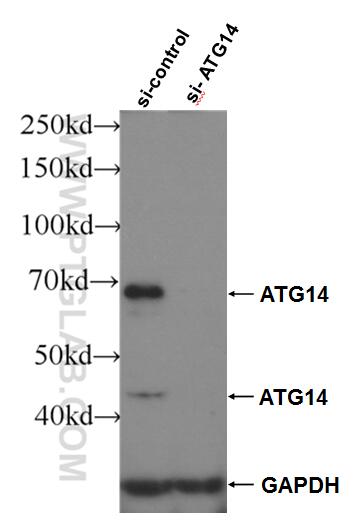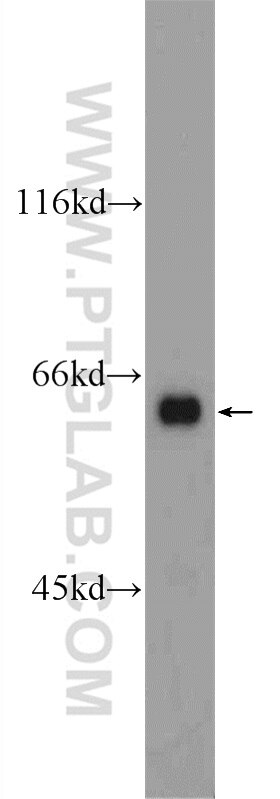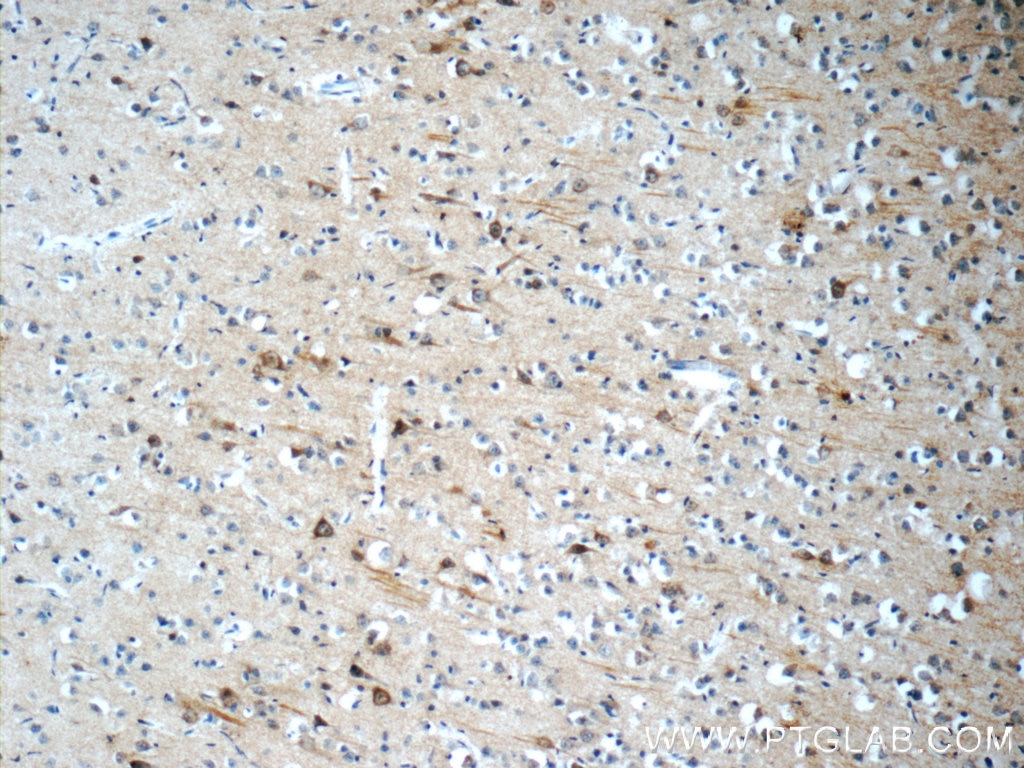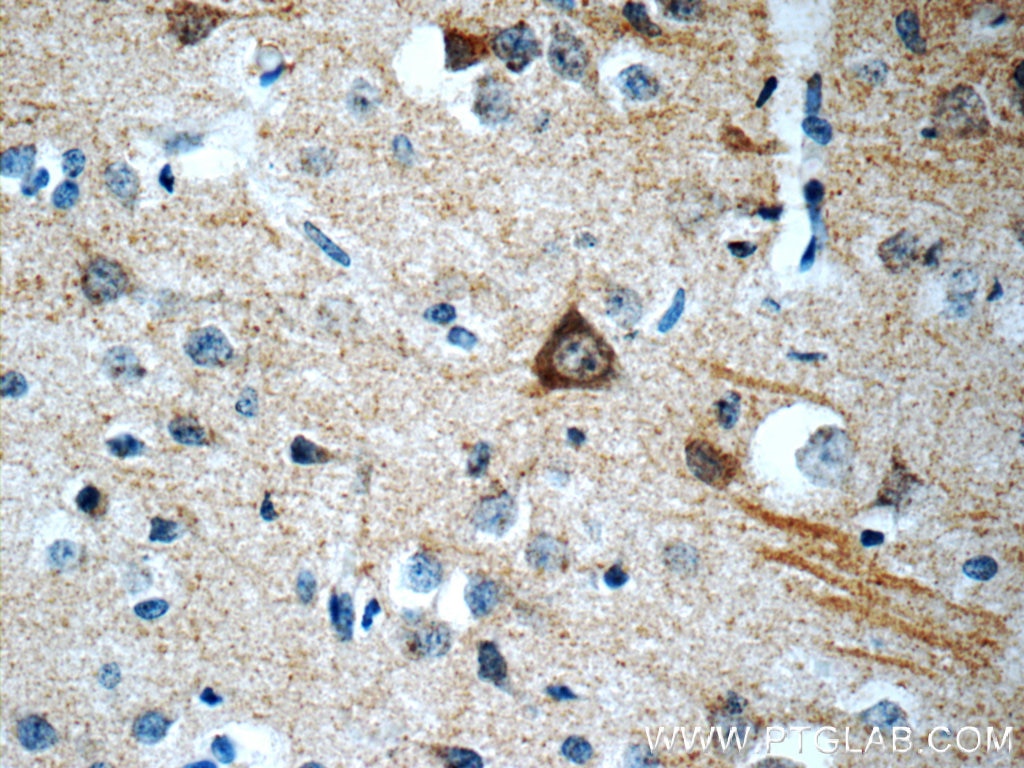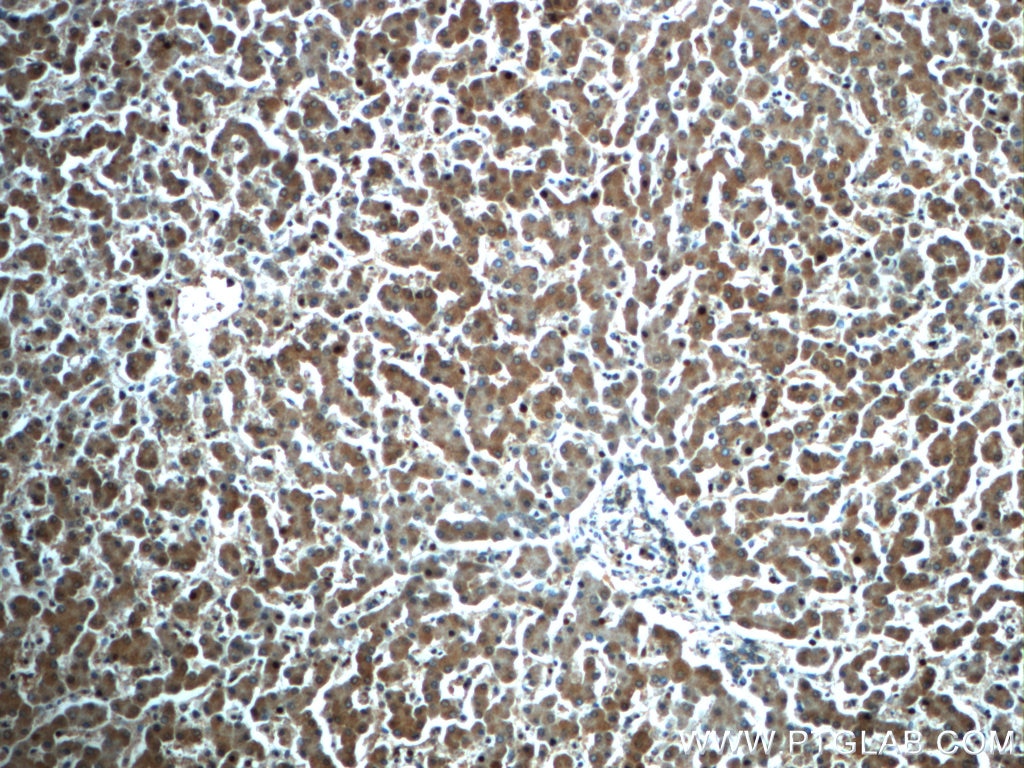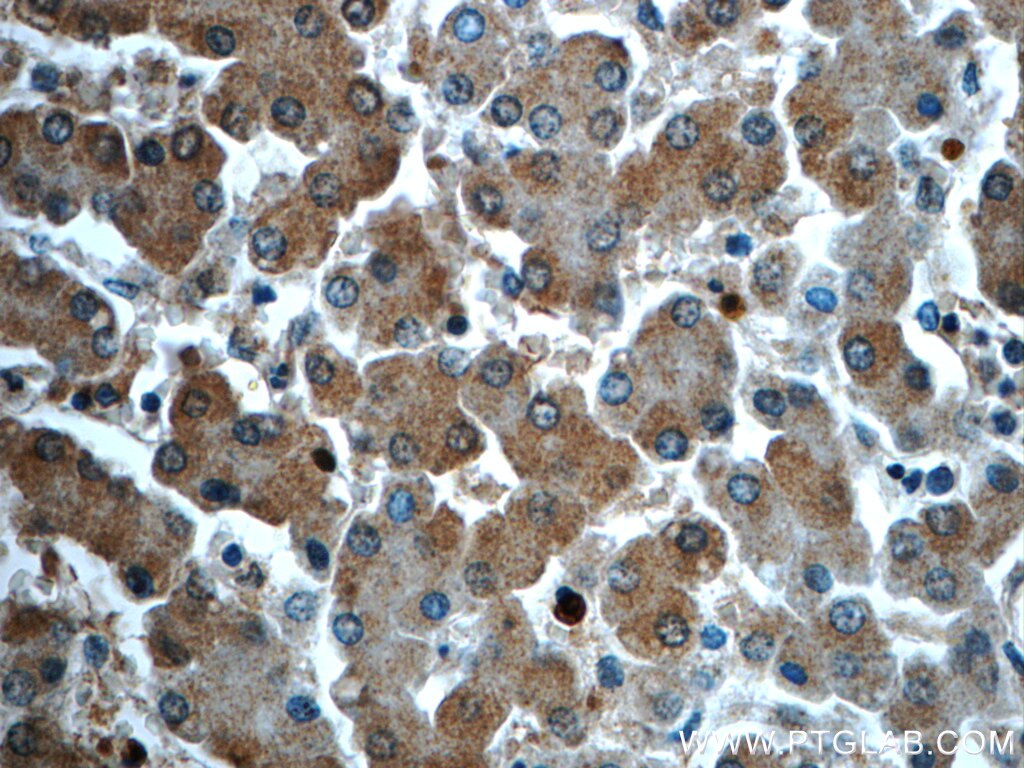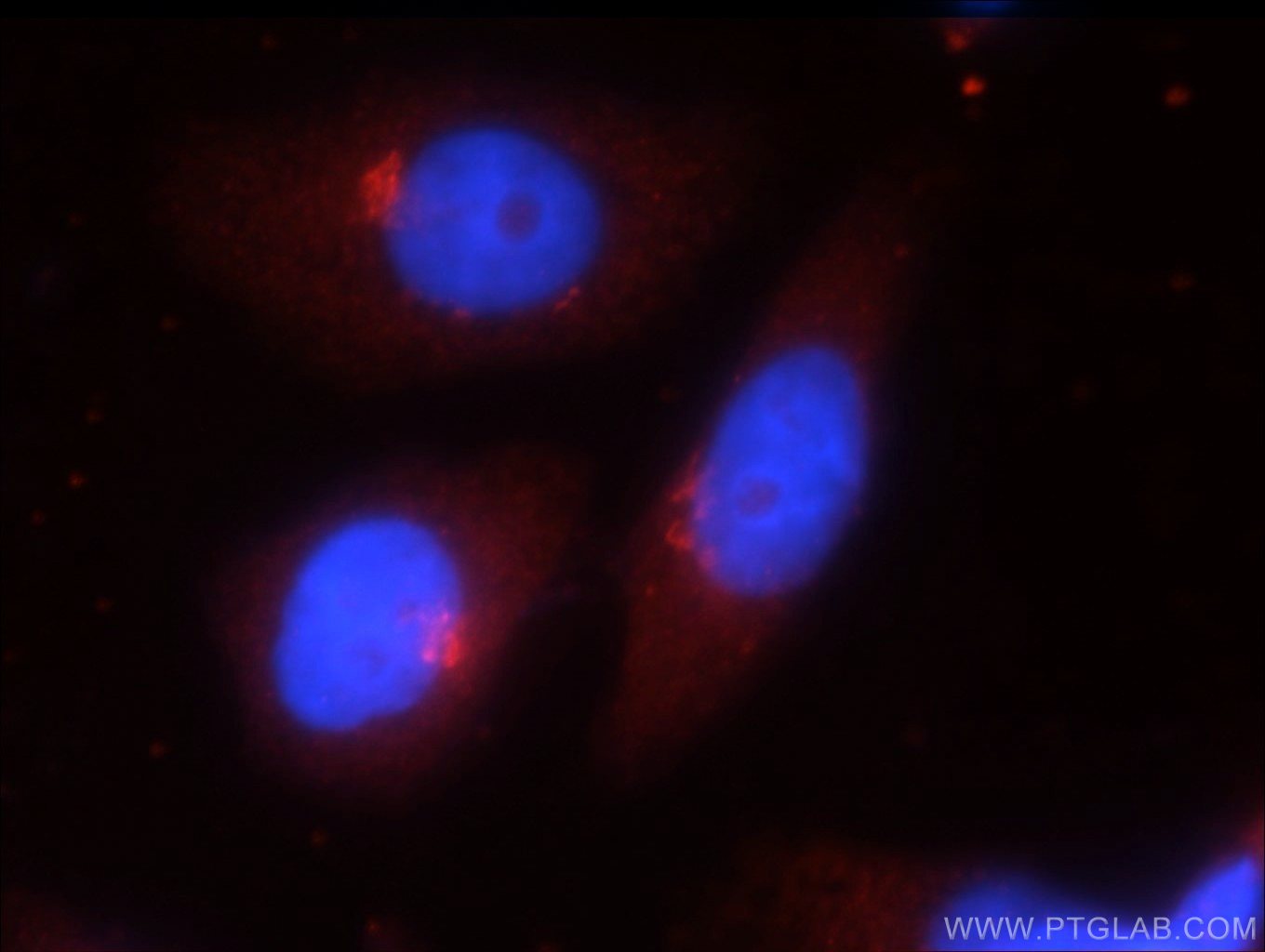- Featured Product
- KD/KO Validated
ATG14/Barkor (C-terminal) Polyklonaler Antikörper
ATG14/Barkor (C-terminal) Polyklonal Antikörper für IF, IHC, WB,ELISA
Wirt / Isotyp
Kaninchen / IgG
Getestete Reaktivität
human, Maus
Anwendung
WB, IHC, IF, ELISA
Konjugation
Unkonjugiert
Kat-Nr. : 24412-1-AP
Synonyme
Galerie der Validierungsdaten
Geprüfte Anwendungen
| Erfolgreiche Detektion in WB | Maushirngewebe, HeLa-Zellen |
| Erfolgreiche Detektion in IHC | humanes Hirngewebe, humanes Lebergewebe Hinweis: Antigendemaskierung mit TE-Puffer pH 9,0 empfohlen. (*) Wahlweise kann die Antigendemaskierung auch mit Citratpuffer pH 6,0 erfolgen. |
| Erfolgreiche Detektion in IF | HeLa-Zellen |
Empfohlene Verdünnung
| Anwendung | Verdünnung |
|---|---|
| Western Blot (WB) | WB : 1:500-1:1000 |
| Immunhistochemie (IHC) | IHC : 1:20-1:200 |
| Immunfluoreszenz (IF) | IF : 1:10-1:100 |
| It is recommended that this reagent should be titrated in each testing system to obtain optimal results. | |
| Sample-dependent, check data in validation data gallery | |
Veröffentlichte Anwendungen
| WB | See 4 publications below |
| IF | See 2 publications below |
Produktinformation
24412-1-AP bindet in WB, IHC, IF, ELISA ATG14/Barkor (C-terminal) und zeigt Reaktivität mit human, Maus
| Getestete Reaktivität | human, Maus |
| In Publikationen genannte Reaktivität | human, Maus |
| Wirt / Isotyp | Kaninchen / IgG |
| Klonalität | Polyklonal |
| Typ | Antikörper |
| Immunogen | ATG14/Barkor (C-terminal) fusion protein Ag19707 |
| Vollständiger Name | KIAA0831 |
| Berechnetes Molekulargewicht | 492 aa, 55 kDa |
| Beobachtetes Molekulargewicht | 65-68 kDa, 42 kDa |
| GenBank-Zugangsnummer | BC109090 |
| Gene symbol | KIAA0831 |
| Gene ID (NCBI) | 22863 |
| Konjugation | Unkonjugiert |
| Form | Liquid |
| Reinigungsmethode | Antigen-Affinitätsreinigung |
| Lagerungspuffer | PBS mit 0.02% Natriumazid und 50% Glycerin pH 7.3. |
| Lagerungsbedingungen | Bei -20°C lagern. Nach dem Versand ein Jahr lang stabil Aliquotieren ist bei -20oC Lagerung nicht notwendig. 20ul Größen enthalten 0,1% BSA. |
Hintergrundinformationen
Barkor, also named as ATG14, Atg14L and KIAA0831, is named as Beclin 1-associated autophagy-related key regulator protein. The function of Barkor in autophagy has been manifested in several assays, including stress-induced LC3 lipidation, autophagosome formation, and Salmonella typhimurium amplification. A major band around 65-68 kDa and a light band around 42 kDa can be observed in western blot which may be caused by alternative splicing of ATG14. The specificity of ATG14 antibody has been tested by siRNA test.
Protokolle
| Produktspezifische Protokolle | |
|---|---|
| WB protocol for ATG14/Barkor (C-terminal) antibody 24412-1-AP | Protokoll herunterladen |
| IHC protocol for ATG14/Barkor (C-terminal) antibody 24412-1-AP | Protokoll herunterladen |
| IF protocol for ATG14/Barkor (C-terminal) antibody 24412-1-AP | Protokoll herunterladen |
| Standard-Protokolle | |
|---|---|
| Klicken Sie hier, um unsere Standardprotokolle anzuzeigen |
Publikationen
| Species | Application | Title |
|---|---|---|
Cell Death Differ ATG4D is the main ATG8 delipidating enzyme in mammalian cells and protects against cerebellar neurodegeneration. | ||
J Cell Sci Syntaxin 17, an ancient SNARE paralog, plays different and conserved roles in different organisms. | ||
Microb Pathog Roles of bovine viral diarrhea virus envelope glycoproteins in inducing autophagy in MDBK cells. | ||
Exp Eye Res Inhibiting miR-129-5p alleviates inflammation and modulates autophagy by targeting ATG14 in fungal keratitis. | ||
EMBO Rep An ULK1/2-PXN mechanotransduction pathway suppresses breast cancer cell migration |
